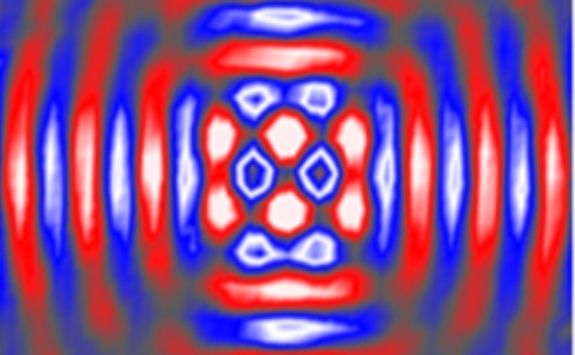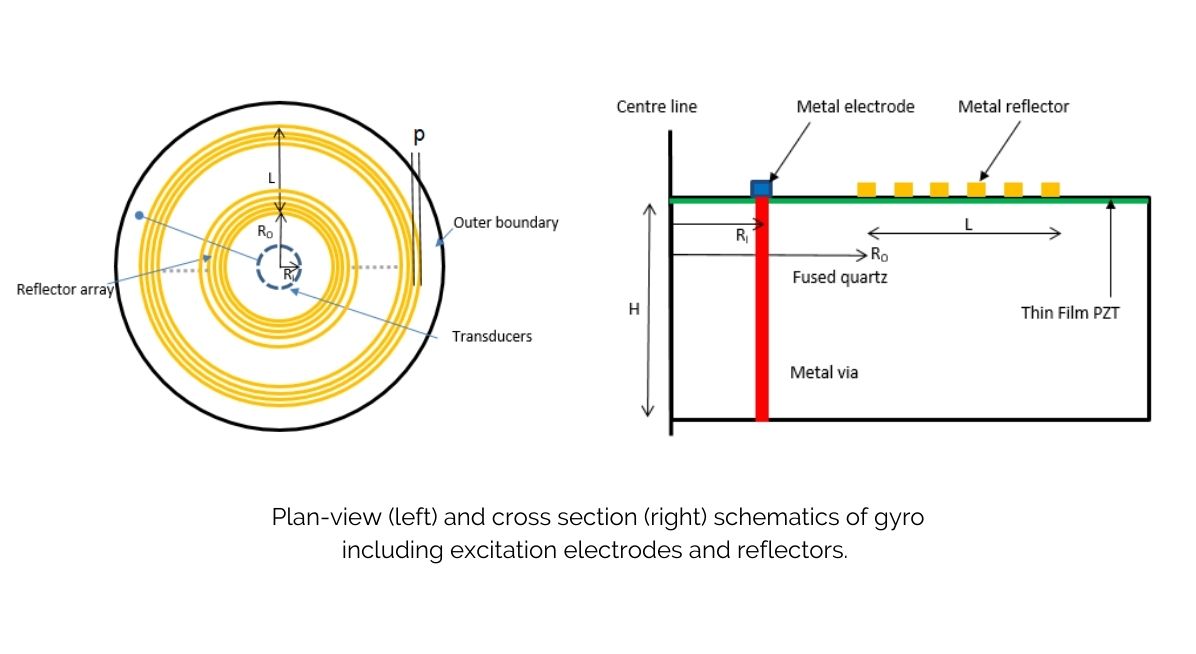Polar Form Rayleigh Wave Gyroscope
By using Rayleigh waves with a circular wave-front we can improve gyroscope performance whilst simplifying manufacturing.
Background
- Current MEMS gyroscopes require flexible members in their designs, which are an essential feature for mearing angular rate
- e.g. ring, cylinder hemispherical and beam based vibratory gyroscopes
- The design leads to low flexural rigidity and fragile devices
- This results in inaccuracies in the output of the Gyro (due to drift), or catastrophic failure
- Under high acceleration (>20,000g) fractures can occur in the gyroscopes rendering them useless
- Mechanical stops have been used to avoid excessive strain, but this prevents operation of the gyroscope under high acceleration.
Solution
By using Rayleigh waves with a circular wave-front we have been able to isolate the sensing mechanics from the underlying substrate.
This results in:
- Reduced drift
- Gyroscopic measurements whilst undergoing acceleration
- Capable of operating under high g-force (>20,000 g)
- Simplified manufacturing method
Applications
Depending on substrate selection devices can be made to cater for:
- Low cost, high volume markets, such as consumer and healthcare applications
- Performance applications requiring measurements under high g-force.
Image right: Measured (Laser Vibrometry) Polar Form (n=2) Rayleigh Wave (No Reflectors)

